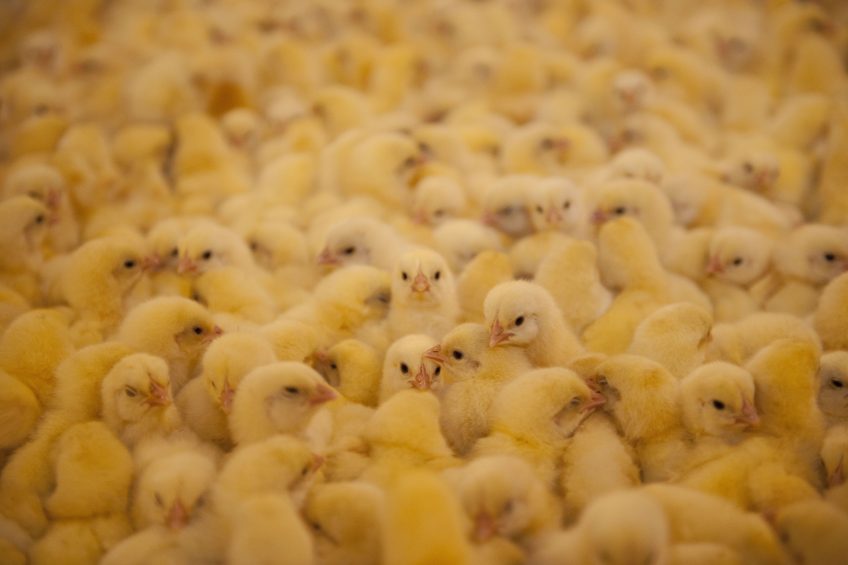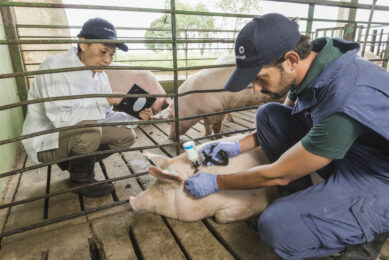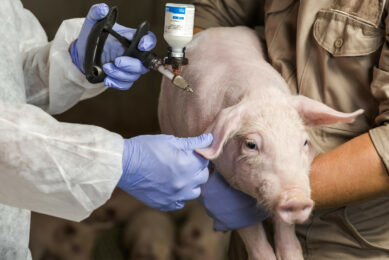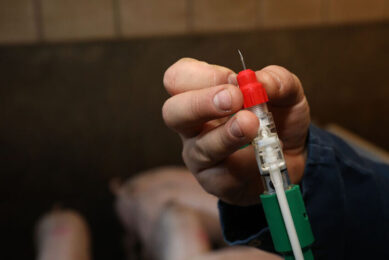Aiding the poultry gut with yeast fractions

With certain traditional, medicinal safeguards, like antibiotics, being called into question, yeast fractions are being proved to be a useful addition to a bird’s diet in order to help maintain good gut health and strong growth rates.
The gut is the most important organ when it comes to converting expensive feed into meat. As genetic adaptations have enabled higher feed intakes, the consequence is that more nutrients are available for harmful bacteria to feed off and a lower proportion of nutrients are then absorbed to aid bird growth. The reduction in performance caused by the chronic inflammation of the gut due to these bacteria, coupled with the negative impact on digestive performance created by other sources of stress associated with poultry production, highlight just how important bird gut health is to the financial success of a poultry enterprise.
Traditionally, antibiotics would be routinely used to pre-empt and treat health concerns in birds to ensure maximum health and performance. Now however, more and more consumers and processors are asking that their poultry meat comes from farms using the least antibiotics possible, or even none at all. Antibiotic growth promoters (AGPs) have been banned from use in poultry production in Europe since 2006 and the use of antibiotics in a preventative capacity has also declined. But efforts still need to be made if we want to keep the efficacy of antibiotics when sick animals really need to be treated and they must be used cautiously in order to preserve their effectiveness well into the future.
When it comes to antibiotics, ‘prevention’ is the key word for the future of animal production: good farm management, high level of biosecurity and high feed quality are required to prevent physiological disorders and to make birds healthier, more resistant and therefore less likely to require antibiotics. One preventative measure to improve the resilience of birds is to incorporate yeast fractions into poultry feed.
Positive effects on gut health
Broilers and layers are now very productive animals, and good gut health is important to ensure that birds are making the most efficient use of feed. 70% of the immune system capacity of a bird is concentrated around or inside the gut (Gut associated lymphoid tissue (GALT), Peyer patches, spleen, liver, Fabricius bursa), so it is easy to understand that good intestinal integrity will have a positive impact on the immune status of birds and therefore their overall performance. Safmannan yeast fractions manufactured by Phileo Lesaffre Animal Care, are produced via primary culture and purification from a specific strain of Saccharomyces cerevisiae. Safmannan is then utilised in poultry feed because of the beneficial impact that it has on the gut health and the immune system of birds. The complete control of all processes associated with the yeast’s production ensure a consistent product, with a balanced composition in mannans and Beta-1,3/1,6-glucans, resulting in a positive effect on a bird’s gut health.
Several trials have demonstrated the effect of the product in the preservation of intestinal villi length under challenging physiological conditions (for example, in birds suffering with Clostridium), helping to maintain an optimal absorption of key feed nutrients. By controlling the release of certain pro-inflammatory cytokines, the product reduces the impact of mucosal intestinal inflammation, therefore preserving villi length. Another positive effect is shallower crypts and a higher ratio of villi length/crypt depth, which is an indicator of good gut health (Figure 1).
Protecting the cell wall from pathogens
A trial has been completed to show the effect of Safmannan on the production of goblet cells, which secrete the mucus that protects the gut cell wall. Birds fed with supplemented feed produced three times more goblet cells than those fed with a control feed. Gram-negative bacteria have the ability to attach to the gut cell wall with specific antigens – the Fimbriae. These antigens then bind to mannans covering the surface of the intestinal epithelium. As the product contains at least 20% of mannans, bacteria are drawn to and bind with it. Posadas et al. (2017) did several trials to demonstrate this theory and the product bound 98% of the tested Salmonella Typhimurium strains used in the trials. Moreover, 75% of Clostridium perfringens were also bound, even if Gram-positive bacteria had no Fimbriae. The mode of action for Gram-positive bacteria is still to be made clear, but it confirms that supplementing with the yeast fraction helps to decrease pathogenic bacteria pressure in the gut and helps to limit the negative effects of pathogenic bacteria on gut health.
Impact on the immune system
Good gut health is closely related to a bird’s immune system’s capacity, and the more active the immune system, the better the prevention against pathogens. The supplement also has the capacity to directly interact and improve a bird’s immune system. As well as mannans, the other important components of the product are β-glucans. Together with the mannans, β-glucans are recognised by different receptors on the surface of important immune cells, such as dentritic cells and the macrophages. This recognition enables a faster reaction of the adaptive immune system against a pathogen. The consequence is a higher vaccine response in birds vaccinated against Newcastle disease and several trials have demonstrated this effect. Gomez-Verduzco et al. vaccinated broilers with a live Newcastle disease vaccine at 10 days, and did blood tests, 1 and 2 weeks after the vaccination. The serology method used to assess the impact of supplementation was the Haemagglutination Inhibition test and a significantly higher antibody response was obtained 2 weeks after the vaccination (at 24 days), on the group fed with the supplemented feed (Figure 2). Depending on the circumstances, good monitoring and optimal farm management will help to limit stress and health issues amongst birds during the production period.
References available on request






